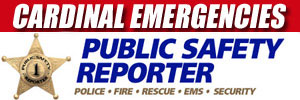Identity theft is one of those distant concerns that many people never really worry about. However, 1 in 15 people ends up facing the unfortunate reality of identity theft. If you’re one of these people, here are some steps that will help you recover from identity theft.
Warning Signs
The “red flags rule” for identity theft requires businesses to write out a policy for dealing with identity theft prevention and detection. A program like this can prevent undue damage to your credit, bank account, and overall financial security. Even if you’re not employed by a business, these rules are essential in addressing identity theft concerns. Here are some of the red flags that should make you wary of possible identity fraud:
- Bank account withdrawals from unknown sources.
- Institutions refusing to take your checks.
- Unfamiliar accounts and charges on your credit card.
- Medical providers sending you bills that aren’t yours.
- Your health insurance won’t pay for your medical services, claiming that you’ve reached your benefits limit.
- IRS notifications about filing extra tax returns or receiving income reports from an unknown source—all under your social security number.
- A job opportunity fails because an employer runs a credit check and your activity doesn’t reflect your actual purchases.
- Collections agencies call about overdue accounts that you cannot identify as yours.
Steps to Recovery
For some, it may be simple to notice these glaring inconsistencies, and many financially aware individuals do catch on to identity theft. The more pressing question then is what can you do to recover from such an invasion of privacy?
- Replace Missing Documents: At this point, you may need to replace some essential identifying documents such as a driver’s license, passport, and social security card.
- File an Identity Theft Report: You’ll need to file two separate reports: a police report as well as an Identity Theft Affidavit form via the Federal Trade Commission. Ultimately, this enables the IRS to confirm you are a victim of identity fraud so they can generate a protection PIN each year to protect you from further illicit activity.
- Freeze your accounts: This will prevent any new charges from occurring without your direct knowledge and consent.
- Close all accounts opened in your name: Call the appropriate bank’s fraud department and explain someone opened an account without your knowledge. They should send confirmation that they closed the accounts and removed them from your credit report.
- Contact your credit companies: With your FTC Identity Theft Report and newly issued proof of identity, call your credit bureaus and explain which information came from erroneous accounts and ask them to remove that information.
facebook …
GET ALERTS on Facebook.com/CardinalEmergencies
GET ALERTS on Facebook.com/ArlingtonCardinal
Stay informed with news from PublicSafetyReporter.com’s Emergencies Behind the Scenes Facebook page — Facebook.com/CardinalEmergencies.

